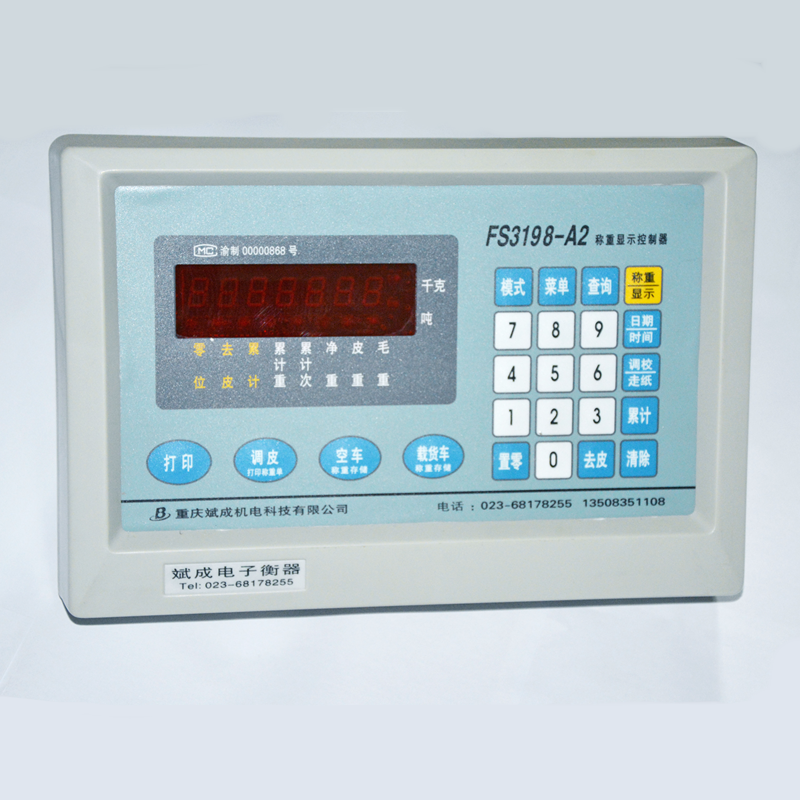The Role of Weighing Display Instruments in Industrial Automation

Within the intricate dance of industrial automation, a crucial component often goes unnoticed: the weighing display instrument. While PLCs orchestrate the flow of materials and robots execute tasks with tireless precision, these seemingly simple displays silently play an indispensable role in ensuring accurate and efficient operation.
Beyond Mere Measurement:
Far from merely presenting weight readings, weighing display instruments act as the sensory nerve center for many automated processes. Here's how they contribute significantly to the success of industrial automation systems:
Data Acquisition: They serve as the vital link between load cells (the workhorses measuring weight) and the automation ecosystem. The instrument collects and transmits weight data, forming the foundation for critical automated decisions.
Process Control and Automation: This data is translated into actionable insights. The instrument can trigger pre-programmed actions – like product sorting, batching, and filling – based on real-time weight parameters. Deviations from setpoints can instigate corrective measures or halt operations to prevent errors.
Quality Assurance: By ensuring consistent and accurate weight readings, weighing displays become the guardians of product quality. Identification of variances from pre-defined weight specifications allows for immediate rectification, maintaining high-quality standards.
Efficiency Optimization: Automated weighing eliminates the need for manual intervention and reduces the risk of human error. This translates to faster and more efficient production processes, streamlining operations and reducing production time.
Inventory Management: Real-time weight data enables accurate tracking of raw materials, finished products, and waste. This facilitates optimized inventory management and cost control through improved resource allocation.
Features Tailored for Automation:
Modern weighing display instruments cater specifically to the demands of industrial automation with features designed for seamless integration:
Comprehensive Communication Protocols: These instruments seamlessly connect with PLCs and other automation systems utilizing protocols like Modbus or Ethernet IP. This two-way communication enables real-time data exchange and control, facilitating a unified and responsive system.
Setpoint Control: This allows for setting specific weight targets, empowering the instrument to trigger automated actions upon reaching those setpoints. This is particularly valuable for applications like batching and filling, ensuring precise and consistent production.
Data Logging and Reporting: The instrument can automatically capture, store, and export weight data for further analysis. This data can be used to identify potential performance improvements and optimize processes for maximum efficiency.
Ruggedized Construction: Built to withstand the rigors of the industrial environment, weighing displays offer superior durability and reliability, ensuring continuous operation even under demanding conditions.
Selecting the Right Instrument:
With a diverse range of options available, choosing the optimal weighing display instrument for your specific automation setup is crucial. Here are key factors to consider:
Application-Specific Requirements: Identify the exact application – batching, filling, checkweighing, etc. – to ensure the instrument's capabilities align with your unique needs.
Communication Protocol Compatibility: Verify seamless integration with your existing automation system through compatible communication protocols.
Accuracy and Resolution: Select an instrument with accuracy and resolution levels that meet the specific demands of your process to maintain the highest level of precision.
User-Friendly Display: Opt for a display with clear and easy-to-read information, ensuring smooth operation and minimizing potential errors.
Conclusion:
Weighing display instruments, while seemingly simple, are truly the indispensable foundation for accurate and efficient industrial automation. They ensure data acquisition, facilitate process control with automated decision-making capabilities, and ultimately contribute to a seamlessly flowing production line. By understanding their crucial role and selecting the right instrument, you can ensure your industrial automation symphony performs flawlessly, delivering optimized production, consistent quality control, and increased profitability.
- Art
- Causes
- Crafts
- Dance
- Drinks
- Film
- Fitness
- Food
- Jocuri
- Gardening
- Health
- Home
- Literature
- Music
- Networking
- Alte
- Party
- Religion
- Shopping
- Sports
- Theater
- Wellness


